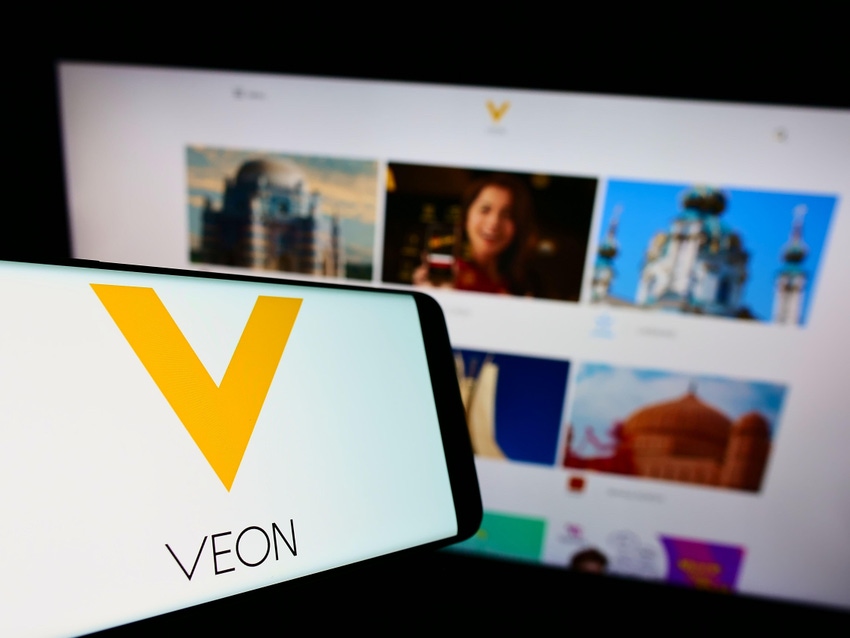VEON revenues up in Q1 amid growing 4G and digital services user base
VEON's revenues grew 11.6% year-over-year to reach $942 million in Q1, with both the 4G and digital services customer base expanding.

VEON's focus on 4G and digital operator strategy are paying off, judging by the Amsterdam-headquartered telco's results for the recent first quarter. Revenues reached $942 million, up 11.6% from last year in local currency terms (or 6.6% in dollars), despite a drop in Ukraine caused by last year's cyberattack.
Service revenues grew 10.4% in local currency (5.5% in dollars) to $903 million. Earnings before interest, taxes, depreciation and amortization (EBITDA) were, meanwhile, up 5.1% to $386 million, registering a 0.2% uptick in dollar terms.
The group attributes the positive results to the successful execution of its Digital Operator 1440 strategy, which covers offerings in fintech, education, healthcare and entertainment, tailored for each market, on top of more traditional telco products. For anyone wondering, 1440 refers to the number of minutes in a day, with VEON seeking to build a digital offer that will allow consumers to use one of their services for each of them.
The one market where revenues shrunk was Ukraine, where last year's cyberattack on VEON subsidiary Kyivstar took a toll, with revenues falling 17.8% in dollar terms – or 14.1% in local currency – to $188 million. The drop in revenues was due mainly to the customer retention program adopted after the cyberattack, which cost 1.7 billion Ukrainian hryvnia (US$43.2 million), and additional customer appreciation measures worth UAH1.8 billion ($45.8 million). This adds up to roughly the $95 million in costs that VEON had already announced in the aftermath of the outage.
Without these one-off costs, revenues at Kyivstar grew 6.8% and EBITDA increased by 9.9% on rising 4G penetration and growth in data and the use of digital services by customers. The mobile subscriber base was, however, down 1.9% as many Ukrainians continue to live abroad amid the war raging in the country.
Forging ahead with 4G
At group level, capex increased by a whopping 38.6% to $125 million. This appears to be due mainly to the ongoing expansion of the 4G network. Bangladesh was the only market where capex fell – by 51% – as most of the 4G rollout is already complete.
Unlike most of Europe, where 5G is now de rigueur for operators who like to bemoan the toll it has taken on their finances, VEON is known for being a 5G dissenter. It has instead focused on bolstering its 4G coverage, with the 4G customer base growing by 10.6% to 97.4 million out of a total of 110.6 million monthly active users. VEON is active in markets where 5G has not yet become widespread. Last year, Terzioğlu told Light Reading that fewer than 5% of customers had 5G-compatible handsets.
The motivation for investing in 4G seems partly about driving demand for VEON's digital services. In the most recent quarter, VEON reports the number of multiplay B2C customers, meaning those who use at least one of the group's digital services on top of voice and data, was up by 21.4% to 33.6 million. They represented 26.3% of VEON's active customer base, and 49.4% of the group's B2C revenues. Average revenue per user (ARPU) is 3.9 times higher among these customers, whose churn rate is also 2.2 times lower than it is for voice-only customers.
All of this is in line with the company's digital operator strategy, which also sees the group turn its attention to generative AI. Light Reading spoke to VEON's CEO Kaan Terzioğlu during the Mobile World Conference in Barcelona, where he said he expects AI to become part of the telco's offering much like other digital services. In future, he said, a VEON operator could make two offers to a client, with one focusing strictly on data, text messages and minutes. Another one may involve a GenAI tool for the client's profession, in their native language.
Beeline for the exit
If VEON is more ambitious in GenAI than Western operators, it is in part because native languages in the markets where it operates are not seen as high-priority ones by developers.
Earlier this week, the group signed a memorandum of understanding with its subsidiary Beeline Kazakhstan, the GSMA and the Barcelona Supercomputing Center to develop AI and language technologies for languages with "low digital resources."
Currently, VEON is active in six markets, which are soon to become five. In March, the group agreed to sell a majority stake in Beeline Kyrgyzstan to CG Cell Technologies to better focus on "its markets where it can create scale with its DO1440 digital operator model." The deal is subject to regulatory approvals, but its execution would leave VEON active in Bangladesh, Kazakhstan, Pakistan, Uzbekistan and Ukraine.
Of course, this is far from being VEON's most important exit in recent history. In October, the group completed the protracted sale of its Russian unit VimpelCom. Its withdrawal from Russia – once by far its biggest market – came in the wake of the country's full-scale invasion of its neighbour Ukraine.
About the Author(s)
You May Also Like














